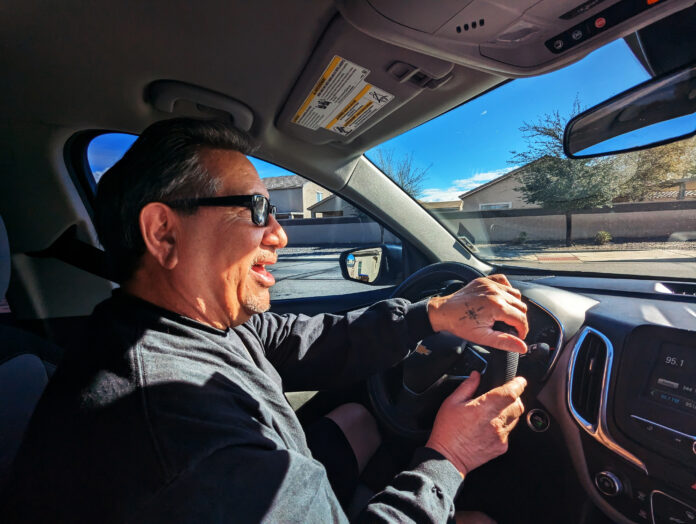
It was a moment of divine inspiration for Arthur Valencia as he took his final ride of the night as a Lyft driver a few years ago.
Valencia was working a Saturday in Phoenix but was ready to go home to Senita. Before calling it a night, he decided to do one more trip and it was one that changed his life.
His timing was impeccable with the Arizona Cardinals football game ending and the associated surge fees that would come with 64,000 people leaving State Farm Stadium at once. Maybe this trip would yield a decent fare, he thought. Demand was sky-high at that moment.
Valencia took a three-mile ride that paid $23.
“The guy got in the car and said, ‘For $100, this trip better be a good one,’” Valencia said.
Shocked, Valencia responded, “You paid $100 for this ride?” and then told the rider he was only getting $23. Lyft was going to get $77.
Not for long, though.
The two decided to cancel the trip through the app and the rider agreed to pay Valencia $50 instead.
“It was a better deal for both of us,” Valencia said. “It was more than double what I was going to make through the app, and he saved $50.”
Was it the final ride that Valencia gave through ridesharing apps? No. But the seed had been planted.
As time went on, Valencia printed business cards and started to market himself and his services to people he met through the rideshare apps and on social media, efforts which allowed him to transition off rideshare apps like Uber and Lyft, giving Maricopans rides to the airport or anywhere else.
For the last five years, Valencia has regularly posted on Facebook about some of his wilder experiences under the name “UberMan.” In total, he’s told 300 stories about rides gone wrong — and right.
Valencia has built up a book of business that now includes nearly 1,300 clients. Each one is a testament to consumer fatigue over the viral ridesharing apps that swept the country during the last decade.
In an emerging Maricopa economy whose workers increasingly rely on gig work to make ends meet — but where gig work is hard to come by and less convenient than in other cities — Valencia’s decision to divorce Silicon Valley becomes more diffcult for each person who attempts it after him.
Booked
Instead of turning on an app and waiting for a client, Valencia’s phone rings, he checks his calendar to see if he’s got an opening and pencils them in.
He has his normal clients, and more come every day. If you search for an Uber driver on one of the Maricopa Facebook boards, Valencia’s name will come up repeatedly. For example, poster Alyssa Durkee said, “Arthur Valencia is my go-to and who I recommend, and about a dozen other posters agreed.
It’s hard to say how far in advance you’d have to contact Valencia to get a spot on his calendar — he has rides scheduled as far out as two months.
And if a rider cancels, Valencia doesn’t charge a cancelation fee. It’s one of the ways he does better than the behemoths, Uber and Lyft, and survives the competition.
It’s more than enough business to keep Valencia busy and well-paid, as he shares clients with friends whom he knows will take good care of them.
One of those friends is Christina Dick, who started her own company, Sonoran Shuttle and Concierge.
“We constantly share clients,” Dick said.
With Maricopa’s population exploding, there’s no shortage of customers, or a need to poach. In fact, there’s an etiquette to it, Dick explained.
“We try to stay with our own clients,” she said. “We try to respect one another, but sometimes a customer is going to do what they’re going to do.”
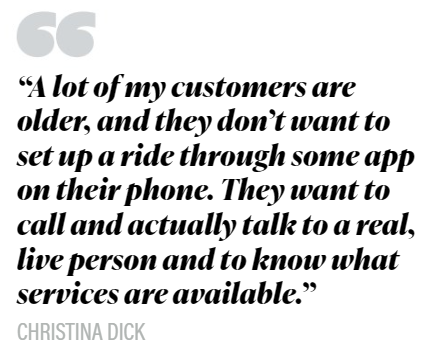 Gig business is big business
Gig business is big business
Gig work isn’t limited to taxi services. Henry Harris focuses on rides but also picks up groceries and other items to be delivered. He compiled a book of 120 clients after putting in his time with Uber and Lyft and made the transition off the apps. Much like Valencia, Harris is all over Facebook with loads of positive reviews.
Dick offers many other services in addition to transportation. She’ll do your shopping for you or wait for a repairman and let him into your house, so you don’t have to take a day off from work. She’ll also do pickups and deliveries.
“I’ve really taken a lot of time to listen to my customers and what they’re wanting,” Dick said.
While the ridesharing industry might seem like it’s tethered to an app, Dick pointed out that’s not been the case with her business.
“A lot of my customers are older, and they don’t want to set up a ride through some app on their phone,” Dick said. “They want to call and actually talk to a real, live person and to know what services are available.”
Diminishing returns
For Harris, the attraction to ridesharing came years ago after a divorce.
“I needed the flexibility that being an Uber or Lyft driver could offer,” he said “It worked great for me. I could work a few hours and make good money.”
But over time, the money was starting to dwindle, and inflation was adding to the expenses of vehicle maintenance and everything else. Especially in metro Phoenix, where inflation was worse than any other American city last year.
“When I started, it was an 80-20 split with the driver getting 80%,” Harris said. “But as time passed, that started to decrease to 60-40 and then it seemed like it got worse than that.”
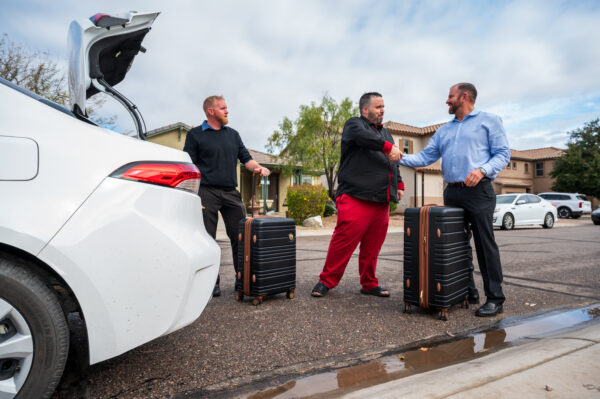
Len Sherman, a professor at the Columbia Business School, analyzed data from Yippit and Gridwise, firms that monitor customer behavior, along with hard statistical financial data in December. He estimated Uber’s take rate for the third quarter of 2023 at 40% for transactions in the U.S.
Uber vehemently denied that finding and insisted its take rate was 21%. However, in the same statement, Uber admitted it doesn’t release a take rate for North America. Instead, 21% represented global transactions.
Last spring, Investopedia estimated Uber’s take rate to be 27%. Lyft reported its take rate to be 33%.
Regardless what the companies say their numbers are, this is more than a statistical argument for Harris. He’s doing this for a living.
And making this kind of living in Maricopa presents a unique challenge.
“The problem is, they don’t pay enough for traffic,” Harris said. “If you are leaving Maricopa, you’re getting $30 to go to the airport and privately, I get $60.”
Harris said Uber pays 12 cents a minute for wait time and if you get stuck on State Route 347 in bad traffic, you’re losing money.
“They’re only paying you $7.20 an hour to wait,” Harris said. “When you figure the cost of gas on that, the numbers don’t work.”
The rides available in Maricopa are slim and the number of drivers in Maricopa even more so.
When trying to figure out which problem caused the other, it’s the classic question of what came first, the chicken or the egg.
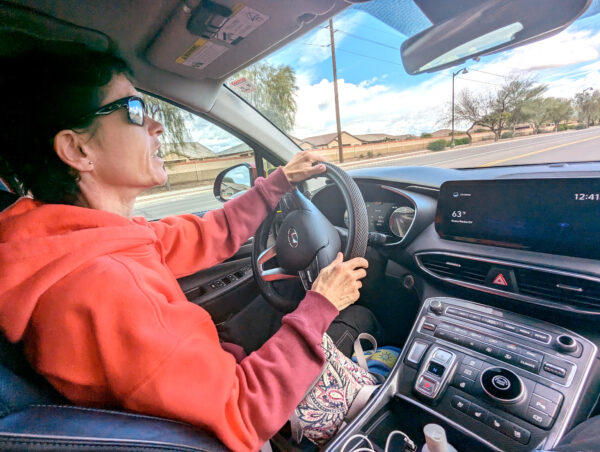
The problem with using a rideshare app is that all the rides are leaving Maricopa and few, if any, ever come back. While you might make a decent fare on the way up there, getting back likely means you drive the length of 347 without making any money.
“I call those dead drives,” Harris said. “There’s no one in the car.”
A new ecosystem blooms
Shortcomings in the rideshare space have created a market for people like Dick, Harris and Valencia.
The scarcity of service in Maricopa has given all three the freedom to make a living on their own terms. They all agree there’s more work available than they can handle.
Drivers make more money than if they used the rideshare apps and customers save money by negotiating a cheaper price than they could get on the apps.
While dealing privately with citizens from Maricopa, none of them had horror stories to share.
“Maricopa is a good place full of nice people,” Valencia said. “I can’t remember the last time I had a problem.”
Dick agreed. “I know all these people I work with. I know them, they know me. We both know what we’re getting.”
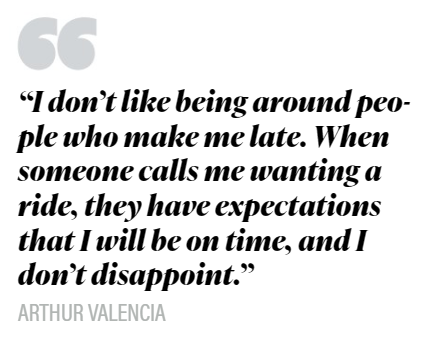 On YouTube, there are countless videos of rideshare customers acting foolish across the nation. And every time a driver gets out of line, there’s a story in the news about it.
On YouTube, there are countless videos of rideshare customers acting foolish across the nation. And every time a driver gets out of line, there’s a story in the news about it.
With this model, the drivers know their customers and the customers know they’re going to get professional service. Dick, Harris and Valencia all drive new, perfectly clean cars. And they put a premium on promptness.
“I hate being late,” Valencia said. “I don’t like being around people who make me late. When someone calls me wanting a ride, they have expectations that I will be on time, and I don’t disappoint.”
A bite to eat
An important part of the rideshare industry is food delivery. At first it was dominated by DoorDash, but as the pandemic shut down dining rooms in 2020, Uber launched Uber Eats and started to chomp away at the market share.
A big part of the demand is the convenience of it all. People are getting meals, groceries and much more delivered through Door Dash and Uber Eats.
For some, time might be more valuable than money.
“There are many people who don’t have the time to shop for themselves,” said Santa Rosa wSprings resident Matt Gordoa. “I’m working a 7 to 12 schedule, and my wife also works a full-time job. Having someone pick up groceries is a great idea.”
Elizabeth Ann Reinking said it came down to stress.
“I personally try to avoid all shopping in Maricopa, because it seriously gives me anxiety,” she said. “I do pickups or have them delivered.”
Harris tried his hand with food deliveries in Maricopa through Uber Eats.
“You’re getting about $6 an order and you get about two orders an hour,” Harris said. “So, you’re making $12 an hour. There’s no way you can make a living on that and that’s all before you include gas and driving.”
Many DoorDash and Uber Eats drivers told InMaricopa they feared retribution from the Silicon-Valley based companies if they spoke about their concerns on the record.
Two people who have long since hung it up as delivery drivers for DoorDash or Uber Eats had stories that mimicked Harris’ experience locally.
Christina Smalley, a 48-year-old mother of three, said she worked through DoorDash for about a year on a part-time basis, averaging eight to 10 hours a week.
“I maybe broke even,” she said. “When you look at the amount of money you made, versus what it took in terms of fuel costs and wear and tear on your car, it just wasn’t worth it to me.”
A common refrain from the workers who deliver using these apps is that there are too many people lining up for too little work.
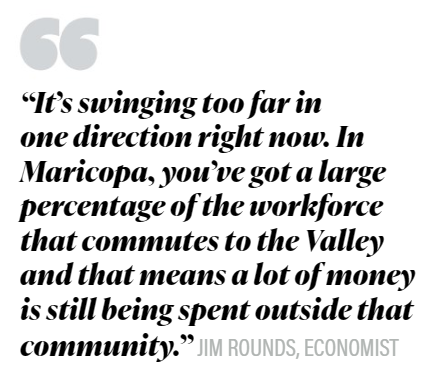 Kyree Smith said it drove him out of the business altogether.
Kyree Smith said it drove him out of the business altogether.
“I used to and stopped,” he said. “This market is oversaturated, and the pay is terrible eight out of 10 times.”
Smalley said when she signed up on DoorDash, there was a wait list for potential Dashers.
Eventually, Smalley grew curious about what it’s like to deliver in other areas.
“I decided to try my luck in Scottsdale,” she said. “I drove up there and slept on a friend’s couch and gave it a shot. I made way more money up there than I ever did in Maricopa. I made $300 in one night, but my knees were aching from climbing stairs all night to deliver those orders to people living in apartments.”
Dylan Farrelly, a 29-year-old security guard, quit his job last year and worked as a DoorDash driver to bridge the gap between jobs.
It’s always busy in Chandler, but not in Maricopa, he said. “I could go up to Ahwatukee or Chandler and in eight hours, I could make $200. But eight hours here wasn’t worth it.”
Farrelly said it was a gamble every time he went out there, but the job served its purpose.
“I consistently make more money guaranteed at my job now and don’t have to put a ton of miles and gas in my vehicle,” Farrelly said. A day’s wages through DoorDash in Maricopa sometimes totaled just $40, he said.
Valencia delivered through Uber Eats, too, but one delivery felt strange.
“I was in Phoenix and saw an order come up for Krispy Kreme, and when I got there they handed me one small bag with a pumpkin spice donut,” Valencia said. “I just couldn’t believe that I drove my car a few miles to deliver one donut. I’m a grown man, a veteran, delivering one donut? What is this?”
Achieving balance
Jim Rounds, a Tempe economist well-versed in Maricopa and Pinal County, said he feels Maricopa’s economy is in transition and will continue to accelerate over the next decade. But until it achieves balance, there’s either going to be a scarcity of drivers to do the work, or in the work to be done.
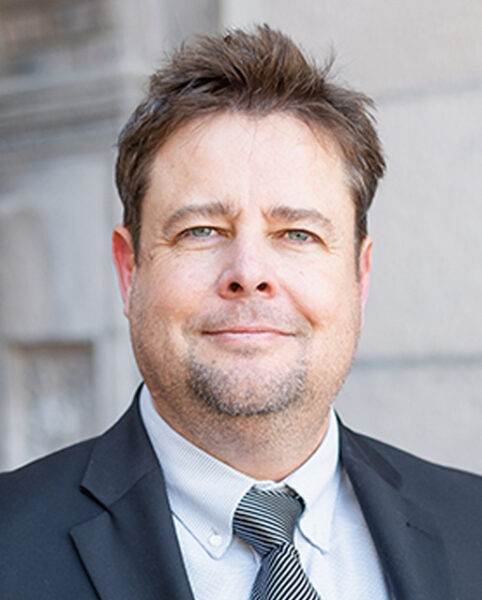
Rounds pointed out a high percentage of existing jobs in Maricopa are focused on retail and as those dynamics change, so will other things.
“A lot of the problems described are going to improve as more high-wage jobs come to the area,” Rounds said. “That will give people more disposable income and it will also increase the number of freelance jobs available in Maricopa to extend beyond rideshare and food delivery services.”
While the city waits for infrastructure and the jobs market to improve, Dick said she has found a niche that works for her situation.
“I enjoy driving,” she said. “I get the Arizona Department of Transportation bulletins each week about road construction, and I keep up with the changes almost in real time. [SR] 347 is awful to drive on and a lot of people would rather just stay in Maricopa, and that’s where I come in to help.”
While the embattled road leading into Maricopa might have opened some doors for local entrepreneurs, Rounds doesn’t see those services going away, even after SR 347 and the county’s infrastructure improve.
“I think there’s always going to be a demand for those services,” Rounds said. “There are always going to be people working 50 to 60 hours a week who need a hand with running errands or other people who need to go to doctor appointments. I think that one day those tasks will be easier to achieve with better roads and the customers will have more income.”
Until then, local entrepreneurs like Dick, Harris and Valencia are taking those lemons and making some fine lemonade.
How the gig economy will lift Maricopa’s futures
Rounds said he feels the gig economy will be an important part of Maricopa’s future growth.
“We’ve done a lot of research on Pinal County and Maricopa in particular and we feel it’s in line for growth that’s going to outstrip the rest of the area,” Rounds said. “You have a lot of businesses there that are getting ready to grow and freelancers are going to play a crucial role in that growth.”
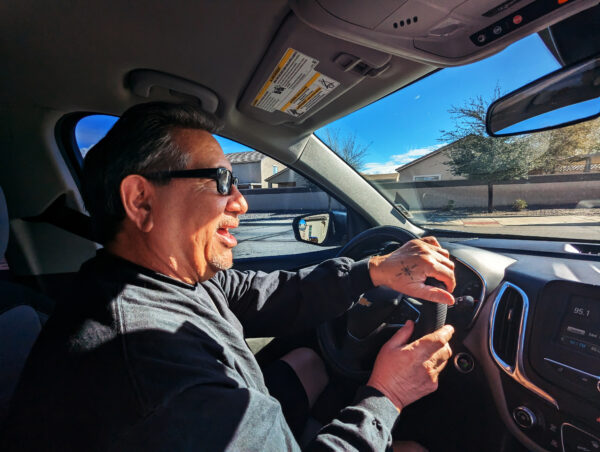
“Let’s say I’ve got a business of five employees, and I’ve got more work than they could do, but not so much that it makes sense to hire another,” Rounds said. “There are a few choices. I can increase my workforce by 20% and spend money that I may not quite be ready to spend, or I can get my existing employees to take on the extra work. They’re not going to be happy with that arrangement and I’m not going to be happy paying for an extra salary that’s not quite feasible yet.”
The third option, a gig worker, makes the most sense for everyone, Rounds said.
“It allows me to take the pressure off our existing employees and at the same time, get the work done without committing to another full-time employee until the business is ready to support the position,” Rounds said.
While the most common example of a freelancer in Maricopan is a DoorDasher or an Uber driver, Rounds feels it’s a trend indicative of the future and to some degree is a reflection of that community itself.
For example, in Maricopa, most jobs existing within the city are related to retail, which means most freelance work is related to that industry. But as more high-wage jobs based in manufacturing and technology come online in the coming years, it will mean more independent contractors will come into the market specializing in those related fields.
As the pandemic becomes more distant in the past, many businesses are starting to call their employees back into the office, which might appear to the casual observer that the gig economy is reaching its end.
Rounds disagrees.
“I see the importance of in-person work for a lot of fields,” Rounds said. “But as an economy, we were heading this way before the pandemic. The gig economy was already developing. The pandemic just accelerated it.”
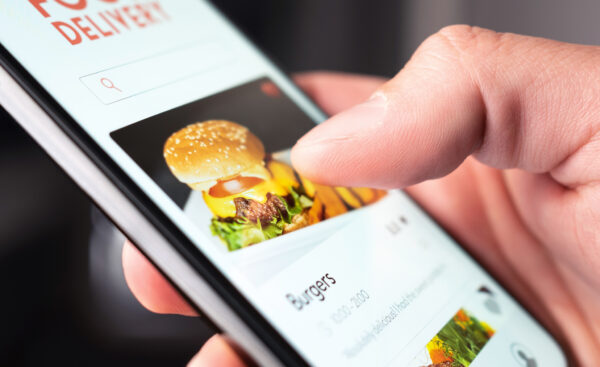 Not what you expected
Not what you expected
When ordering dinner through one of the delivery apps, you might come across a restaurant you’ve never heard of.
It’s called the ghost kitchen phenomenon. Virtual restaurants will lease a brick-and-mortar kitchen during hours the restaurant is closed and produce its products under a different name. The most famous example is Mr. Beast Burger, the brainchild of YouTube’s biggest creator, Jimmy Donaldson, better known as Mr. Beast.
But it goes a step further. Some of the restaurants rebrand themselves just for delivery apps. Ever ordered a burger from the Burger Den? Or what about a big, oversized sandwich from Melt Down? Even though, in the app, those restaurants look like separate entities, they are Denny’s on John Wayne Parkway.
NASCAR Tenders & Burgers operates out of the IHOP restaurant on John Wayne Parkway in the evening hours.
In some cases, these spin-offs have higher ratings than the restaurant itself.
Tips on tipping
These days, tipping has become a sore subject for customers and service workers alike. Many companies have utilized “guilt tipping” to help offset the costs of paying their employees and it’s caused burnout for some customers who feel they’ve been taken advantage of.
But even before the recent madness where every drive-thru, pet salon and even Motor Vehicle Division clerk seemingly has their hand out for a tip, it’s important to remember that tipping delivery drivers and cab drivers has always been custom.
For both groups, the standard is 15%.
Arthur Valencia, who runs his own driving service in Maricopa, looks at it through a broad lens.
“I’ve had a woman try to tip me $20 one time on a $12 ride,” Valencia said. “I told her, ‘That’s more than the ride. You don’t have to do that.”
Valencia didn’t offer a hard and fast rule but said anywhere from $3 to $5 would be sufficient on most trips, unless it’s a longer distance. “If you have 100 trips over the course of a week and everyone tipped you $3, that’s $300. That’s going to make a difference in that driver’s life that week.”
Christina Dick, who runs a driver and concierge service in Maricopa, said it comes down to understanding the financial pressures the drivers may be experiencing.
“I’m paying for gas, insurance, the wear and tear on my car and taxes,” Dick said. “These are all little things that people don’t take into account.”
Most importantly, a tip is the best way of saying, “Thank you.”
“And at the end of the day, I think it’s just about showing appreciation. It goes a long way,” Dick said.
A story to tell
Valencia, a native of San Francisco, spends a lot of time on the road chauffeuring people in and around Maricopa.
To some degree, he’s become a part-time therapist for his clients.
“As I’ve gotten older, I’ve learned to listen more,” Valencia said. “Everyone has a story they want to tell. I’m there to listen.”
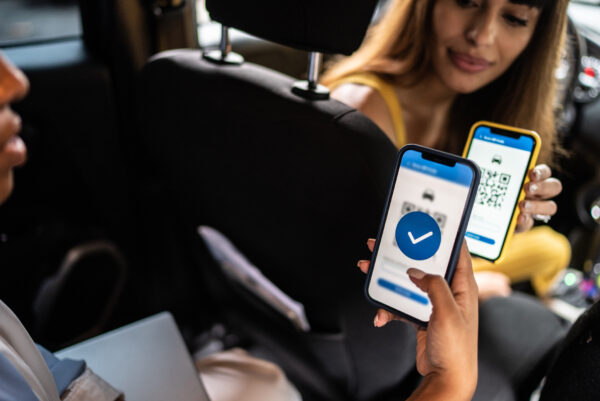 Valencia said his riders make life interesting both in their actions and their stories.
Valencia said his riders make life interesting both in their actions and their stories.
As a result, he took inspiration from the HBO television show Taxicab Confessions and started sharing his stories on a Maricopa Facebook page.
“I started to notice with the people I picked up, I was living that same life as those drivers on TV,” he said.
He’s posted 300 iterations of his blog, Travels of an Uber Driver, in the last six years. Some of his posts garner hundreds of likes and comments.
Valencia’s stories vary from wild to what some may call mundane. One time, he picked up a dominatrix who was on her way to see a client. Another day, he might go pick up visitors at the Amtrak station who are down on their luck.




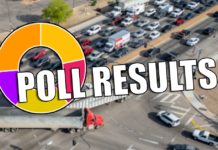

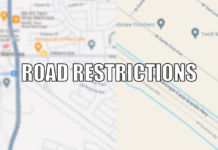

![City gave new manager big low-interest home loan City Manager Ben Bitter speaks during a Chamber of Commerce event at Global Water Resources on April 11, 2024. Bitter discussed the current state of economic development in Maricopa, as well as hinting at lowering property tax rates again. [Monica D. Spencer]](https://www.inmaricopa.com/wp-content/uploads/2024/04/spencer-041124-ben-bitter-chamber-property-taxes-web-218x150.jpg)




![Alleged car thief released without charges Phoenix police stop a stolen vehicle on April 20, 2024. [Facebook]](https://www.inmaricopa.com/wp-content/uploads/2024/04/IMG_5040-218x150.jpg)



